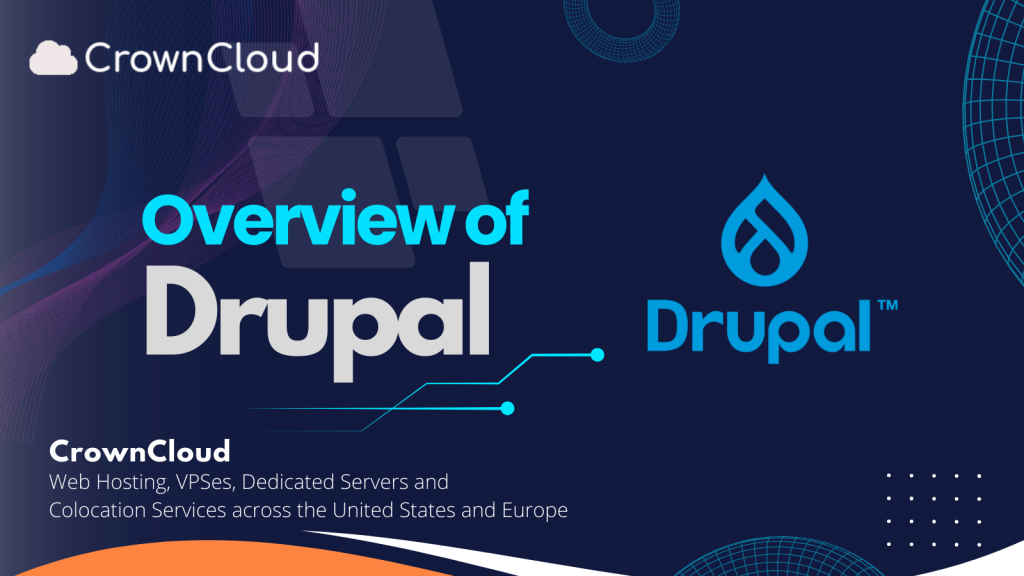Today’s article provides a comprehensive overview of Drupal.
What is Drupal?
Drupal is an open-source content management system (CMS) that allows you to create and manage websites. It is recognized for its adaptability, scalability, and strong community support. Drupal is popular among individuals, corporations, and organizations of all sizes, ranging from small blogs to huge enterprise websites.

Features of Drupal
Content Types & Custom Fields: It lets you construct several content kinds (such as articles, blogs, and products) and configure fields to hold additional data.
User Management: It includes extensive user management capabilities such as role-based access control, which enables administrators to establish permissions for various user roles.
Taxonomy System: It includes a robust taxonomy system for categorizing and identifying material, which is beneficial for organizing vast amounts of data.
Themes & Templates: Drupal themes manage the look and feel of a site, and users can construct custom templates to meet specific design requirements.
Multilingual Support: It supports several languages out of the box, making it an ideal choice for global websites.
Responsive Design: It is designed to be responsive, which means that websites developed with Drupal are easily browsed on mobile devices.
Extensibility: Drupal’s functionality may be extended to encompass everything from e-commerce to forums and more, thanks to the thousands of accessible modules.
Security: It is well-known for its strong emphasis on security, which includes regular upgrades and a dedicated security team.
SEO-Friendly: It has tools and modules for optimizing content for search engines, which help websites rank higher in search results.
API Support: It provides broad API support, enabling for integration with third-party services and applications.
Advantages of Drupal
Flexibility: You can customize Drupal to build anything from simple blogs to complex websites.
Scalability: It can handle lots of visitors and large amounts of content, making it great for big websites.
Strong Community: Many developers and users contribute to Drupal, so it’s always improving.
Security: It is very secure, which is why it’s trusted by governments and big organizations.
Free to Use: It is open-source, so you don’t have to pay for it, and you can change the code to fit your needs.
Supports Multiple Languages: It makes it easy to create websites in multiple languages.
Content Management: It offers tools to help you manage and organize your content efficiently.
Integrates with Other Systems: It can connect with other software and tools you use.
Helps with SEO: It has features that help your website rank better in search engines.
Always Improving: The Drupal community regularly adds new features and updates to keep it modern.
Here are the typical requirements for using Drupal:
Web Server: Apache, Nginx, or Microsoft IIS.
PHP: Version 7.4 or higher (check Drupal’s official documentation for the most current version requirements).
Database: MySQL 5.7 or higher, MariaDB 10.3 or higher, PostgreSQL 10.0 or higher, or SQLite 3.26 or higher.
Memory: Minimum of 64 MB of PHP memory (128 MB or more recommended for better performance).
Disk Space: Minimum of 450 MB for core installation (additional space needed for content and modules).
Browser: Modern web browser for administration (e.g., Chrome, Firefox, Safari, Edge).
Installation on Linux OS (CentOS and Ubuntu based OS):
You can find installation instructions in the CrownCloud Wiki Guides, simply search for Drupal using the search bar.
Purchase a KVM VPS – Choose a KVM VPS plan from us that suits your requirements.
KVM SSD Plans – https://crowncloud.net/ssd_kvm.php
NVMe SSD KVM VPS Plans – https://crowncloud.net/nvme_kvm.php
AMD Ryzen SSD KVM VPS – https://crowncloud.net/ssd_amd_ryzen_kvm.php
Intel i9 12900K SSD KVM VPS Plans – https://crowncloud.net/ssd_intel_i9_kvm.php